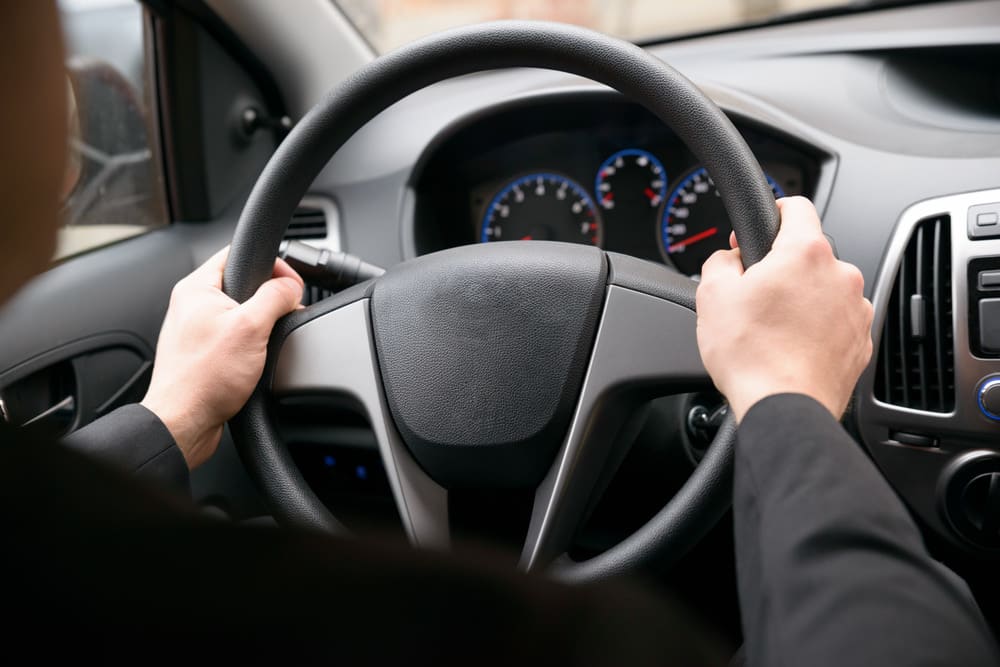

Many cars today, and almost all trucks and utility vehicles, feature power steering. Power steering (also known as power-assisted steering) greatly eases parking and other low-speed driving and it’s a practical necessity for heavier vehicles and for drivers who aren't very strong. But how does it affect handling?
Power steering is pretty much what it sounds like: a power steering system helps the driver turn the wheels using hydraulic or electric power (or both). The system may just provide a helpful push or it may do all the work itself in response to the motion of the steering wheel; either way, turning a vehicle with power steering requires less effort than it otherwise would.
Automotive power steering systems vary greatly in design, but a typical hydraulic setup includes the following:
A sensor attached to the steering wheel that detects force or torque — in effect, the system “knows” when the driver turns the steering wheel and the car’s wheel haven’t caught up yet, so the system can provide assistance when it’s needed.
A pump, driven by the car’s engine (usually by means of a belt), to raise the pressure in the power steering fluid up to as much as 100 times atmospheric pressure.
A collection of valves that direct the high-pressure fluid through hoses or metal tubes to one side or the other of the steering system according to how the steering wheel has been turned.
Actuators with which the high-pressure power steering fluid helps push the front wheels to one side or the other (the details depending on whether the vehicle has rack-and-pinion or recirculating ball steering).
Electric power steering systems work differently but achieve similar results.
The goals of power steering
Ideally, power steering would do its job of making steering easier without having any negative effects on handling. The steering would still be quick and precise without being too sensitive to control easily, and the driver would still be able to tell what the wheels were doing at all times. All vehicle manufacturers try to achieve those goals with their power steering systems, and for the most part they succeed. Modern power steering systems that are functioning properly usually don’t have a big, negative impact on handling.
How power steering affects handling
Still, there’s always at least some effect. It’s very difficult to design a power steering system that allows easy low-speed maneuvering while still providing good feedback (sometimes referred to as road feel) to the driver; no power steering system yet designed can give the road feel of a well-designed manual system on a sports car like a Lotus Elise. There are trade-offs involved, and some vehicles’ power steering systems emphasize road feel, such as in a Porsche Boxster, while others favor ease of driving, as in most sedans. In performance cars, the steering may feel slightly heavy at times (though not nearly as much as in cars with manual steering), while in luxury cars, or especially in big utility vehicles like a Chevy Suburban, the steering may feel fingertip-light, even when parking. The steering wheel may never vibrate, even on rough roads, but it may also be more difficult to tell what the wheels are doing.
A related phenomenon is that there may be what feels like a “dead spot” when the wheels are centered — in other words, a slight turn of the steering wheel may seem not to turn the car at all or the steering may seem sluggish until the steering wheel is turned a lot. This dead spot varies from vehicle to vehicle; again, performance cars usually offer more accurate feedback and therefore have less of a dead spot but as a consequence they may feel somewhat twitchy at high speed, while luxury models may feel a bit more sluggish in exchange for less twitchiness. Manufacturers are constantly working on improvements that will let drivers have the best of both worlds, but the systems aren’t perfect yet so there’s always a trade-off.
The biggest effect on handling that results from power steering, however, is what happens if the system fails. Power steering failure is very rare but it’s important to know what to expect if it does occur.
The most common reasons for power steering failure are:
- Fluid loss, from a slow or sudden leak (hydraulic systems only)
- Pump failure (hydraulic systems only)
- Loss of power (hydraulic and electrical systems), either because of engine failure or because of loss of power to the steering system alone
If your power steering goes out it can become very difficult to steer the vehicle. A steering system that is designed to operate with power assistance isn’t meant to be driven without that power, and because of steering gear ratios, other geometrical considerations, and drag in the system, it can be surprisingly hard to turn the wheel when this happens. If it happens when you’re traveling at high speed, the result can be frightening because it may feel like you’ve lost steering control.
So, what should you do if your power steering fails? First, don’t panic. It may seem like you can’t steer your car at all but you can, it’s just harder. Slow down gently — do not slam on the brakes. Note that the brakes may also be harder to use (if the cause of the failure was a loss of power to the entire vehicle), but as with the steering they do work, they just require more force. If you’re in traffic, turn on your hazard lights (flashers). Pull slowly toward the side of the road; again, it may be difficult to turn the wheel but you can do it. Once you’ve pulled safely off the road, get the steering checked out right away. It may be safe, albeit harder, to drive the car but there also may be some mechanical problem that renders it unsafe.



